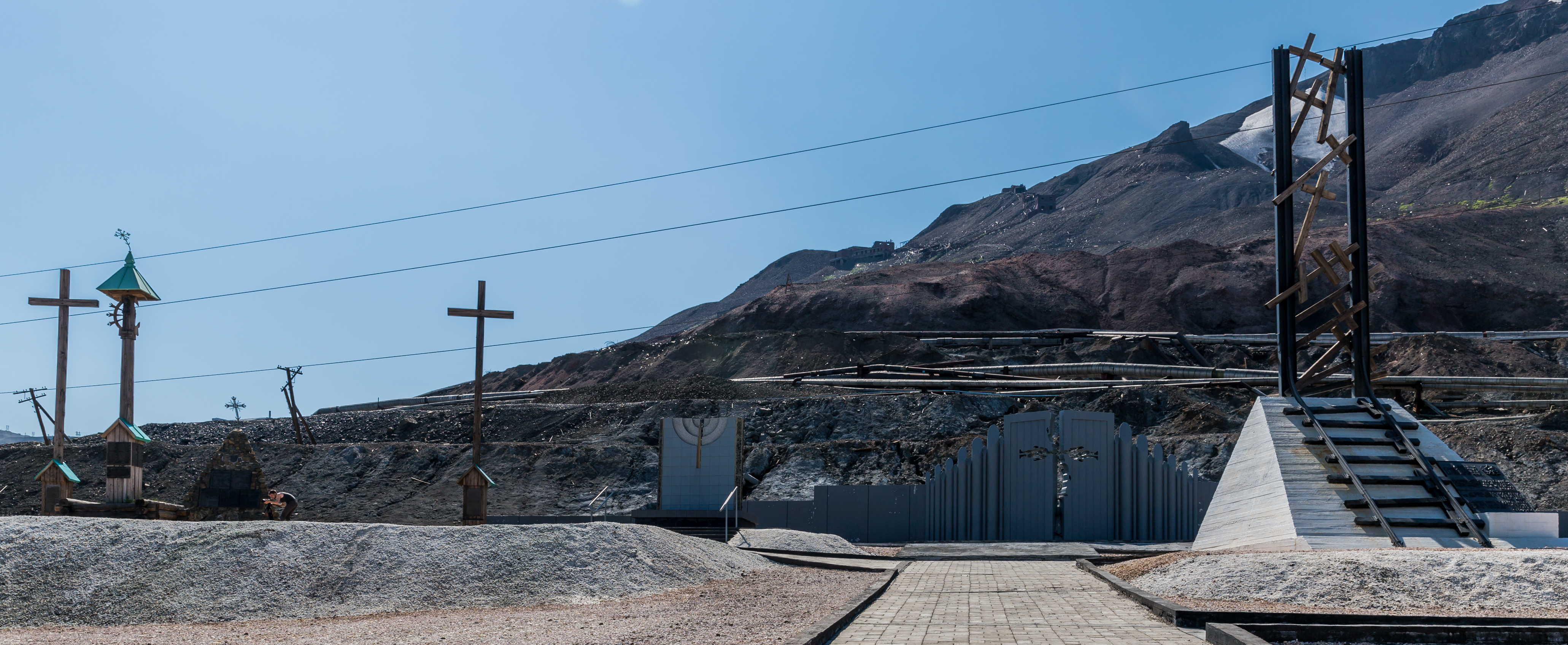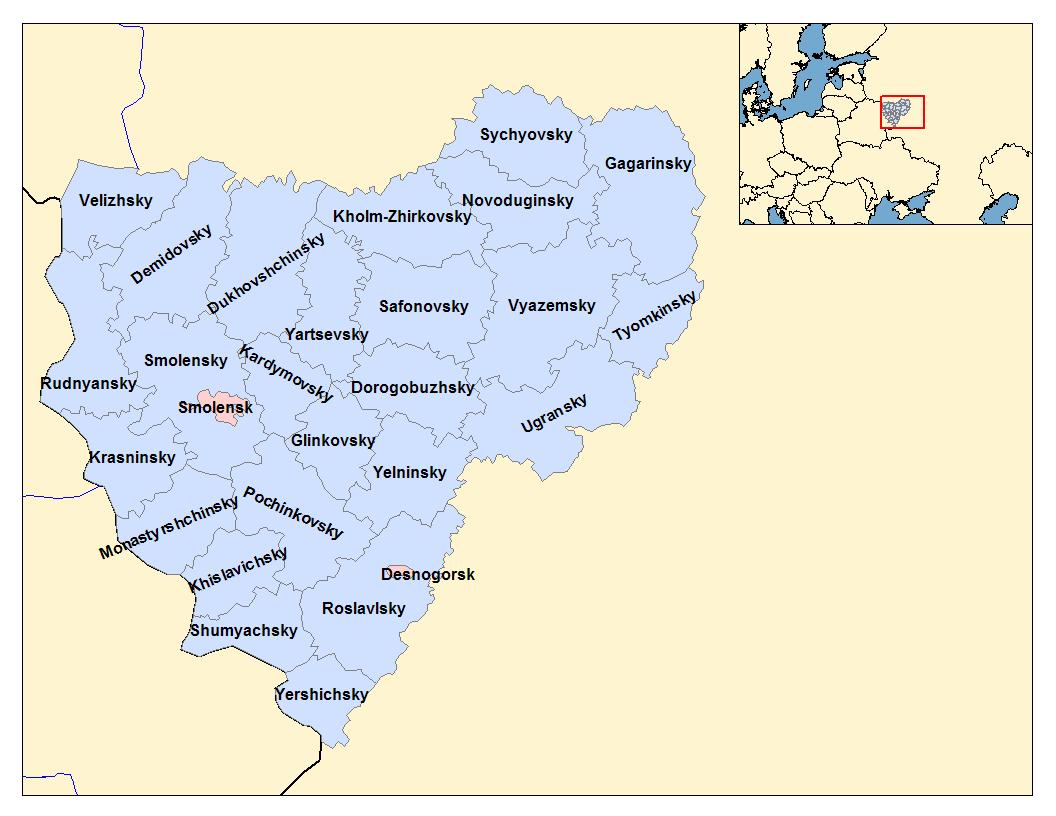|
Dmitry Nikolayevich Medvedev
Dmitry Nikolaevich Medvedev (; August 22, 1898 – December 14, 1954) was one of the leaders of the Soviet partisan movement in western Russia and Ukraine. Medvedev was born in Bryansk in a steelworker's family. During the Russian Civil War he joined the Red Army and in 1920 he joined the All-Russian Communist Party (Bolsheviks). Between 1920 and 1935, he worked for the Cheka, OGPU and the NKVD in Soviet Ukraine. In 1936 Dmitry Medvedev was sent as a NKVD intelligence agent abroad. In 1938 he returned to the Soviet Union and was appointed the head of the NKVD department of Norillag, a GULAG labor camp in Norilsk. Several months later, Medvedev was fired from NKVD officially for "unjustified closures of criminal investigations" against political prisoners of the GULAG. In 1939 Medvedev retired and settled in the Moscow region. In the summer of 1941, a few days after the German invasion of the Soviet Union, he was re-instated as a NKVD officer and sent to his native Bryansk reg ... [...More Info...] [...Related Items...] OR: [Wikipedia] [Google] [Baidu] |
Medvedev Dn
Medvedev () and female Medvedeva (), from Russian (), meaning the animal "bear", are Slavic surnames. Notable bearers of the name include: Medvedev (male form): *Alexander Medvedev (born 1955), Russian business manager *Aleksei Medvedev (other) – several people * Andrey Medvedev – several people, including Andriy Medvedev (born 1974), Ukrainian tennis player *Daniil Medvedev (born 1996), Russian tennis player * Dmitry Medvedev (other) – several people, including Dmitry Medvedev (born 1965), Russian politician, former Prime Minister of the Russian Federation, former President of Russia, and Dmitry Medvedev (partisan) (1898–1954), Russian partisan leader in World War II * Evgeny Medvedev (born 1982), Russian ice hockey defenceman *Grigory Medvedev, Soviet sprint canoeist *Hennadiy Medvedyev (born 1975), Ukrainian footballer * Ilya Medvedev (born 1983), Russian Olympic canoer *Maksim Medvedev (born 1989), Azerbaijani footballer * Mikhail Medvedev (1891-1964) ... [...More Info...] [...Related Items...] OR: [Wikipedia] [Google] [Baidu] |
Norillag
Norillag, Norilsk Corrective Labor Camp () was a gulag labor camp set by Norilsk, Krasnoyarsk Krai, Russia and headquartered there. It existed from June 25, 1935 to August 22, 1956. *Karlo Štajner (1902-1992), Croatian writer *Nikolay Urvantsev (1893–1985), geologist and explorer *Nikolai Vekšin (1887–1951), Estonian sailor *, Russian botanist and poet See also * References *Ertz, Simon Chapter 7, ''"Building Norilsk"'' In ''"The Economics of Forced Labor: The Soviet Gulag"'', Paul R. Gregory, Valery V. Lazarev (eds.). Stanford: Hoover Institution Press, 2003 External links Norilsk (Gulag online) {{coord missing, Krasnoyarsk Krai Norillag Buildings and structures in Krasnoyarsk Krai ... [...More Info...] [...Related Items...] OR: [Wikipedia] [Google] [Baidu] |
Nazi-occupied Ukraine
The ''Reichskommissariat Ukraine'' (RKU; ) was an administrative entity of the Reich Ministry for the Occupied Eastern Territories of Nazi Germany from 1941 to 1944. It served as the German civilian occupation regime in the Ukrainian SSR, and parts of the Byelorussian SSR, Russian SFSR, and eastern Poland during the Eastern Front of World War II. ''Ukraine'' was established after the early success of the ''Wehrmacht''s Operation Barbarossa from territory under the military administration of Army Group South Rear Area. The German civil administration was based in Rovno (Rivne) with Erich Koch serving as the only ''Reichskommissar'' during its existence. ''Ukraine'' was part of the Generalplan Ost which included the genocide of the Jewish population, the expulsion and murder of some of the native non-Jewish population, the settlement of Germanic peoples, and the Germanization of the rest. The SS and their ''Einsatzgruppen'', with active participation of the Order Police battal ... [...More Info...] [...Related Items...] OR: [Wikipedia] [Google] [Baidu] |
Oryol Oblast
Oryol Oblast (), also known as Orlovshchina (), is a federal subjects of Russia, federal subject of Russia (an oblast). Its administrative center is the types of inhabited localities in Russia, city of Oryol. Population: Geography It is located in the southwestern part of the Central Federal District, in the Central Russian Upland. In terms of area, at it is one of the smallest federal subjects. From north to south, it extends for more than , and from west to east—for over . It borders Kaluga Oblast to the north-west, Tula Oblast to the north, Lipetsk Oblast to the east, Kursk Oblast to the south, and Bryansk Oblast to the west. There are of black earth soils (chernozems) in the oblast, which amounts to three-quarters of the world chernozem reserves. Climate The climate is temperate (Köppen climate classification, Köppen: Humid continental climate#Warm summer subtype, ''Dfb''). The winter is moderately cold, with an average January temperature from . Summers are w ... [...More Info...] [...Related Items...] OR: [Wikipedia] [Google] [Baidu] |
Smolensk Oblast
Smolensk Oblast (), informally also called Smolenshchina (), is a federal subjects of Russia, federal subject of Russia (an oblast). Its administrative centre is the types of inhabited localities in Russia, city of Smolensk. As of the 2021 Russian census, 2021 Census, its population was 888,421. Geography The oblast was founded on 27 September 1937.Исполнительный комитет Смоленского областного совета народных депутатов. Государственный архив Смоленской области. "Административно-территориальное устройство Смоленской области. Справочник", изд. "Московский рабочий", Москва 1981. Стр. 8 It borders Pskov Oblast in the north, Tver Oblast in the northeast, Moscow Oblast in the east, Kaluga Oblast in south, Bryansk Oblast in the southwest, and Mogilev Region, Mogilev and Vitebsk R ... [...More Info...] [...Related Items...] OR: [Wikipedia] [Google] [Baidu] |
Guerrilla Warfare
Guerrilla warfare is a form of unconventional warfare in which small groups of irregular military, such as rebels, partisans, paramilitary personnel or armed civilians, which may include recruited children, use ambushes, sabotage, terrorism, raids, petty warfare or hit-and-run tactics in a rebellion, in a violent conflict, in a war or in a civil war to fight against regular military, police or rival insurgent forces. Although the term "guerrilla warfare" was coined in the context of the Peninsular War in the 19th century, the tactical methods of guerrilla warfare have long been in use. In the 6th century BC, Sun Tzu proposed the use of guerrilla-style tactics in '' The Art of War''. The 3rd century BC Roman general Quintus Fabius Maximus Verrucosus is also credited with inventing many of the tactics of guerrilla warfare through what is today called the Fabian strategy, and in China Peng Yue is also often regarded as the inventor of guerrilla warfare. Guerrilla wa ... [...More Info...] [...Related Items...] OR: [Wikipedia] [Google] [Baidu] |
Resistance During World War II
During World War II, resistance movements operated in German-occupied Europe by a variety of means, ranging from non-cooperation to propaganda, hiding crashed pilots and even to outright warfare and the recapturing of towns. In many countries, resistance movements were sometimes also referred to as The Underground. The resistance movements in World War II can be broken down into two primary politically polarized camps: * the Internationalism (politics), internationalist and usually Communist Party-led anti-fascist resistance that existed in nearly every country in the world; and * the various nationalist groups in German-occupied Europe, German- or Soviet-Military occupation, occupied countries, such as the Second Polish Republic, Republic of Poland, that opposed both Nazi Germany and the Communists. While historians and governments of some European countries have attempted to portray resistance to Nazi occupation as widespread among their populations, only a small minority of p ... [...More Info...] [...Related Items...] OR: [Wikipedia] [Google] [Baidu] |
Bryansk Oblast
Bryansk Oblast (), also known as Bryanshchina (, ), is a federal subject of Russia (an oblast). Its administrative center is the city of Bryansk. As of the 2021 Census, its population was 1,169,161. Geography Bryansk Oblast lies in western European Russia in the central to western parts of the East European Plain, on the divide between the Desna and Volga basins. The oblast borders with Smolensk Oblast in the north, Kaluga Oblast in the northeast, Oryol Oblast in the east, Kursk Oblast in the southeast, Chernihiv and Sumy Oblasts of Ukraine in the south, and with Gomel and Mogilev Oblasts of Belarus in the west. Natural resources include deposits of peat, sand, clay, chalk, marl, and other building materials, as well as phosphorite. About a quarter of the total area of the oblast is covered by forests, mainly coniferous, mixed, and deciduous, as well as forest-steppe. Bryansky Les Nature Reserve is a biosphere reserve that protects, among other things, a limit ... [...More Info...] [...Related Items...] OR: [Wikipedia] [Google] [Baidu] |
German Invasion Of The Soviet Union
Operation Barbarossa was the invasion of the Soviet Union by Nazi Germany and several of its European Axis allies starting on Sunday, 22 June 1941, during World War II. More than 3.8 million Axis troops invaded the western Soviet Union along a front, with the main goal of capturing territory up to a line between Arkhangelsk and Astrakhan, known as the A-A line. The attack became the largest and costliest military offensive in history, with around 10 million combatants taking part in the opening phase and over 8 million casualties by the end of the operation on 5 December 1941. It marked a major escalation of World War II, opened the Eastern Front—the largest and deadliest land war in history—and brought the Soviet Union into the Allied powers. The operation, code-named after the Holy Roman Emperor Frederick Barbarossa ("red beard"), put into action Nazi Germany's ideological goals of eradicating communism and conquering the western Soviet Union to repopulate it with G ... [...More Info...] [...Related Items...] OR: [Wikipedia] [Google] [Baidu] |
Moscow Oblast
Moscow Oblast (, , informally known as , ) is a federal subjects of Russia, federal subject of Russia (an oblast). With a population of 8,524,665 (Russian Census (2021), 2021 Census) living in an area of , it is one of the most densely populated regions in the country and is the list of federal subjects of Russia by population, second most populous federal subject. The oblast has no official administrative center; its public authorities are located in Moscow and Krasnogorsk, Moscow Oblast, Krasnogorsk (the Moscow Oblast Duma and the local government), and also across other locations in the oblast.According to Article 24 of the Charter of Moscow Oblast, the government bodies of the oblast are located in the city of Moscow and throughout the territory of Moscow Oblast. However, Moscow is not named the official administrative center of the oblast. Located in European Russia between latitudes 54th parallel north, 54° and 57th parallel north, 57° N and longitudes 35th meridian ... [...More Info...] [...Related Items...] OR: [Wikipedia] [Google] [Baidu] |
Political Prisoner
A political prisoner is someone imprisoned for their political activity. The political offense is not always the official reason for the prisoner's detention. There is no internationally recognized legal definition of the concept, although numerous similar definitions have been proposed by various organizations and scholars, and there is a general consensus among scholars that "individuals have been sanctioned by legal systems and imprisoned by political regimes not for their violation of codified laws but for their thoughts and ideas that have fundamentally challenged existing power relations". The status of a political prisoner is generally awarded to individuals based on the declarations of non-governmental organizations like Amnesty International, on a case-by-case basis. While such statuses are often widely recognized by the international public, they are often rejected by individual governments accused of holding political prisoners, which tend to deny any bias in thei ... [...More Info...] [...Related Items...] OR: [Wikipedia] [Google] [Baidu] |






